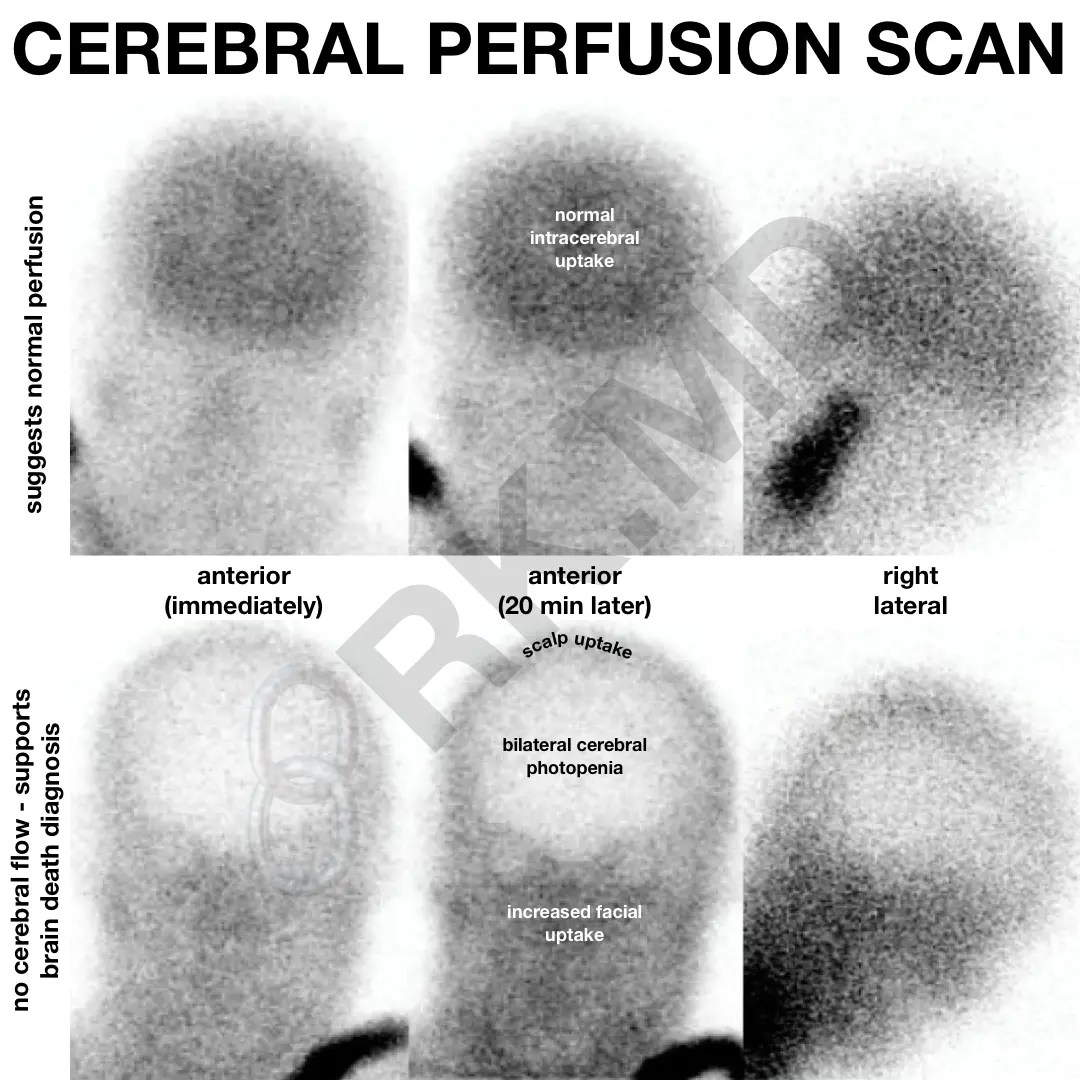Cerebral perfusion scans are nuclear medicine studies utilizing agents like DTPA or NEUROLITE to confirm a clinical diagnosis of brain death. NEUROLITE is a radioactive diagnostic agent (technetium Tc99m bicisate) which passively diffuses across the intact blood-brain barrier and remains stable in the brain for ~6 hours. As such, this agent can assess cerebral blood flow to localize strokes in addition to determining global brain perfusion.
The study itself involves the intravenous administration of NEUROLITE followed by the acquisition of dynamic flow and static images around the head. Sometimes, flow from the external carotid arteries “lights up” regions of the scalp and face (the so-called “hot nose sign”); however, a lack of flow through the internal carotid artery results in no cerebral tracer activity from the brain itself. This confirms the clinical diagnosis of brain death.
The images in the top row show intracerebral uptake of NEUROLITE, suggesting functional brain parenchyma. The bottom show shows findings compatible with the clinical diagnosis of brain death, namely no flow through the cerebral arteries to the brain, bilateral cerebral hemisphere photopenia (decreased radiographic image density resulting in the “hollow skull”), and increased facial uptake.
Source: https://www.lantheus.com/products/overview/neurolite/
Drop me a comment below with questions!






